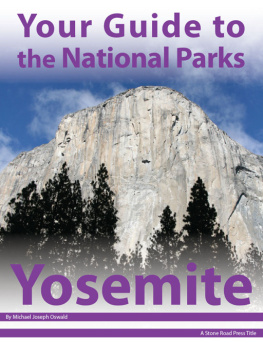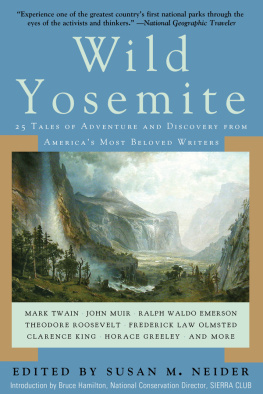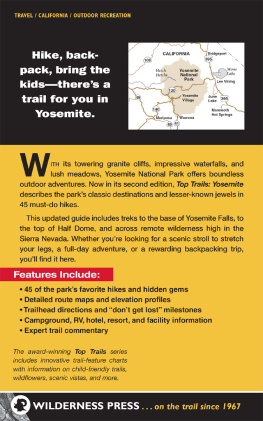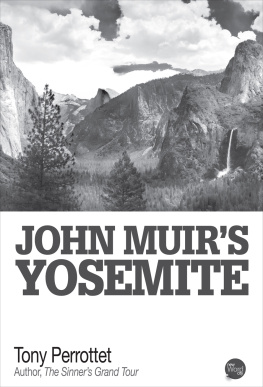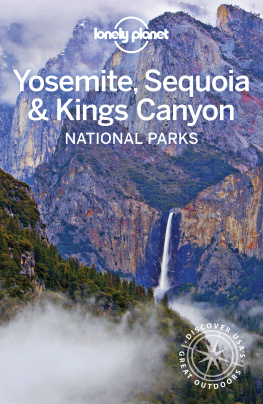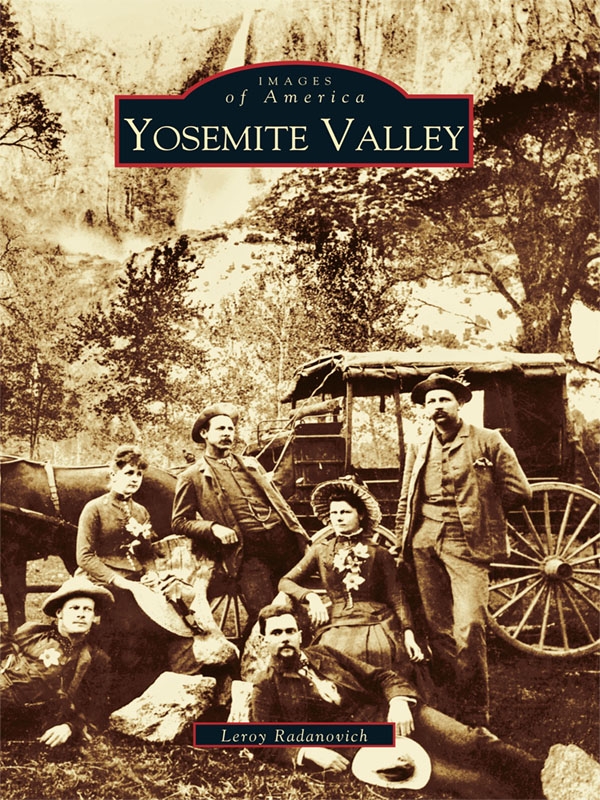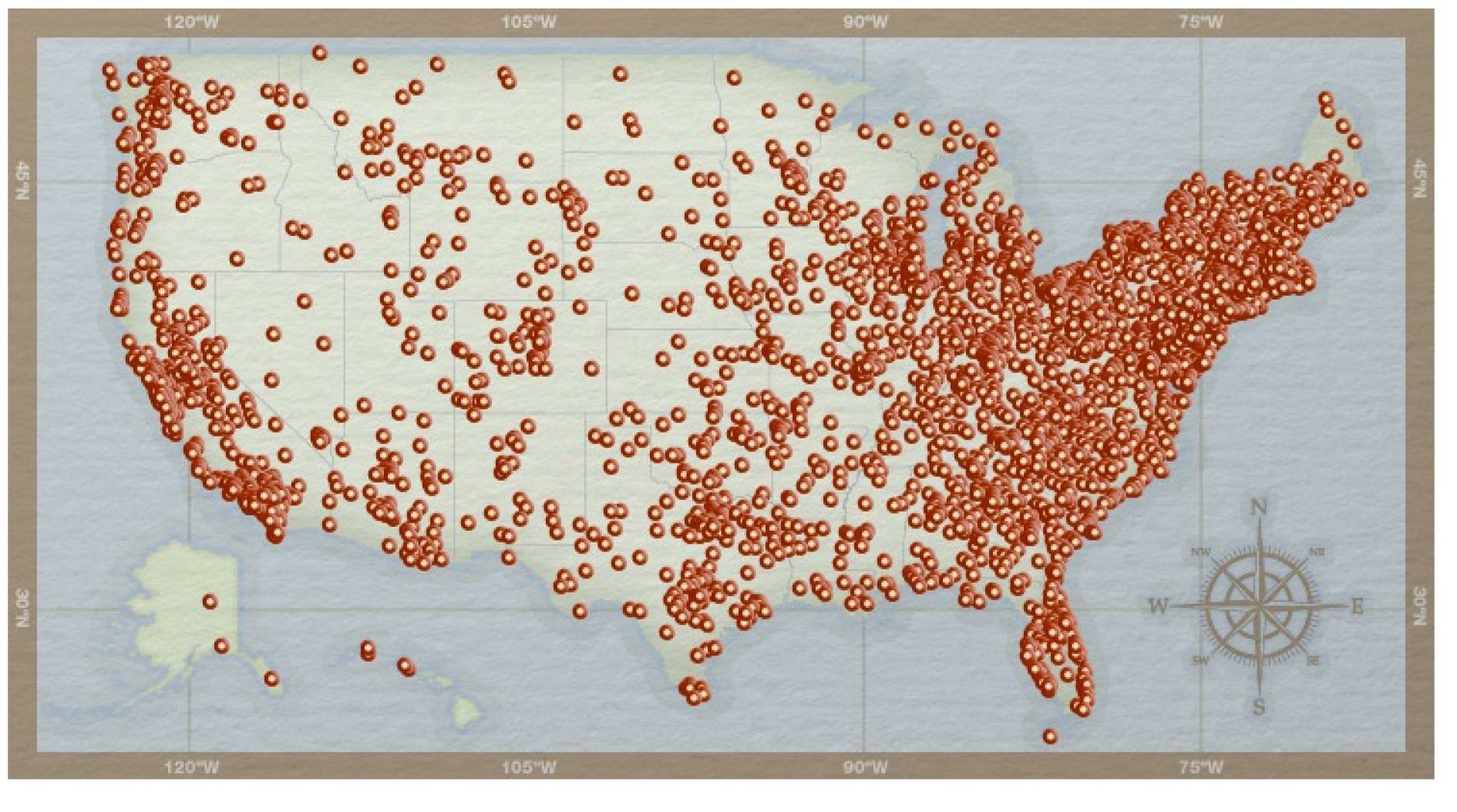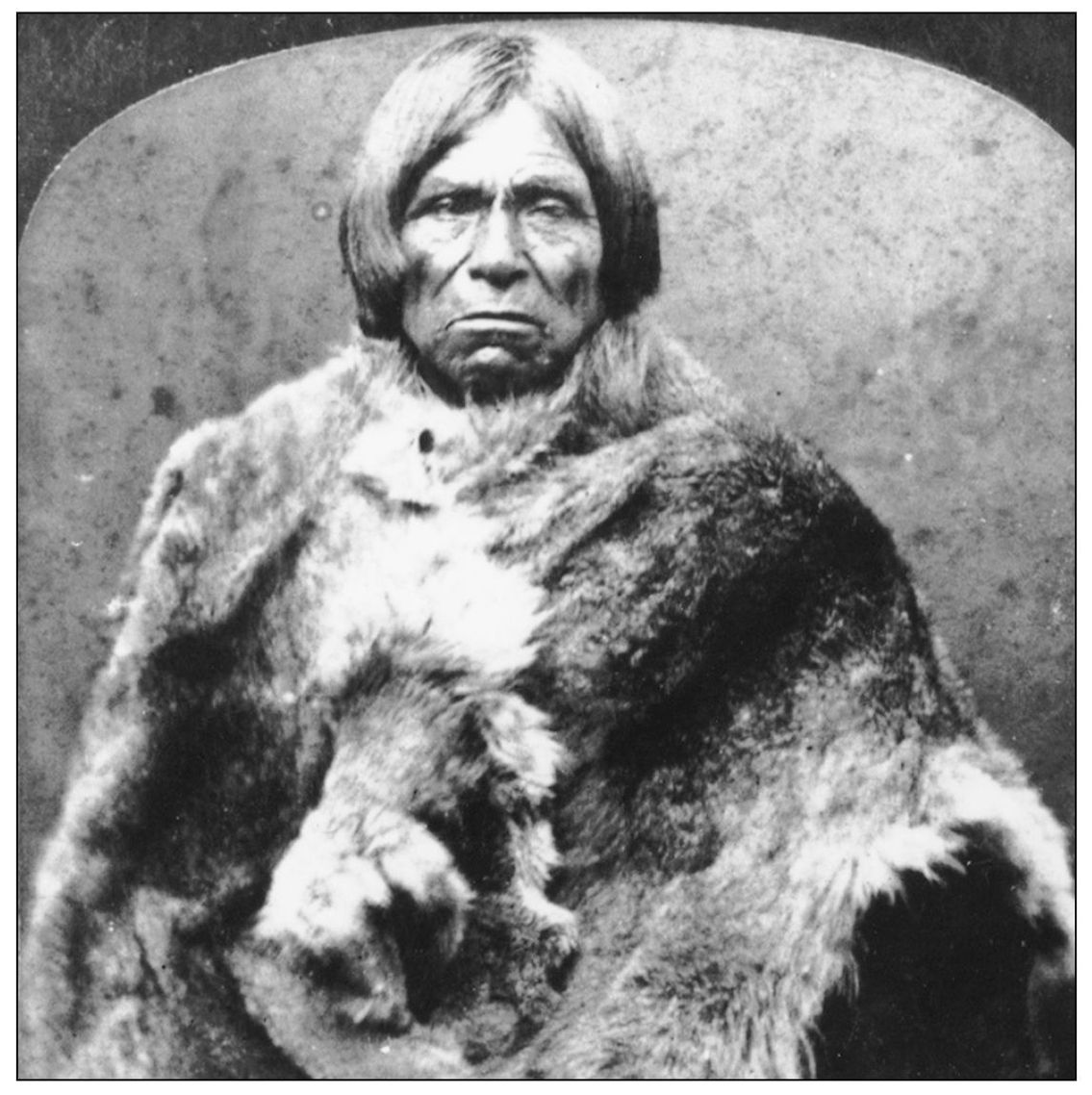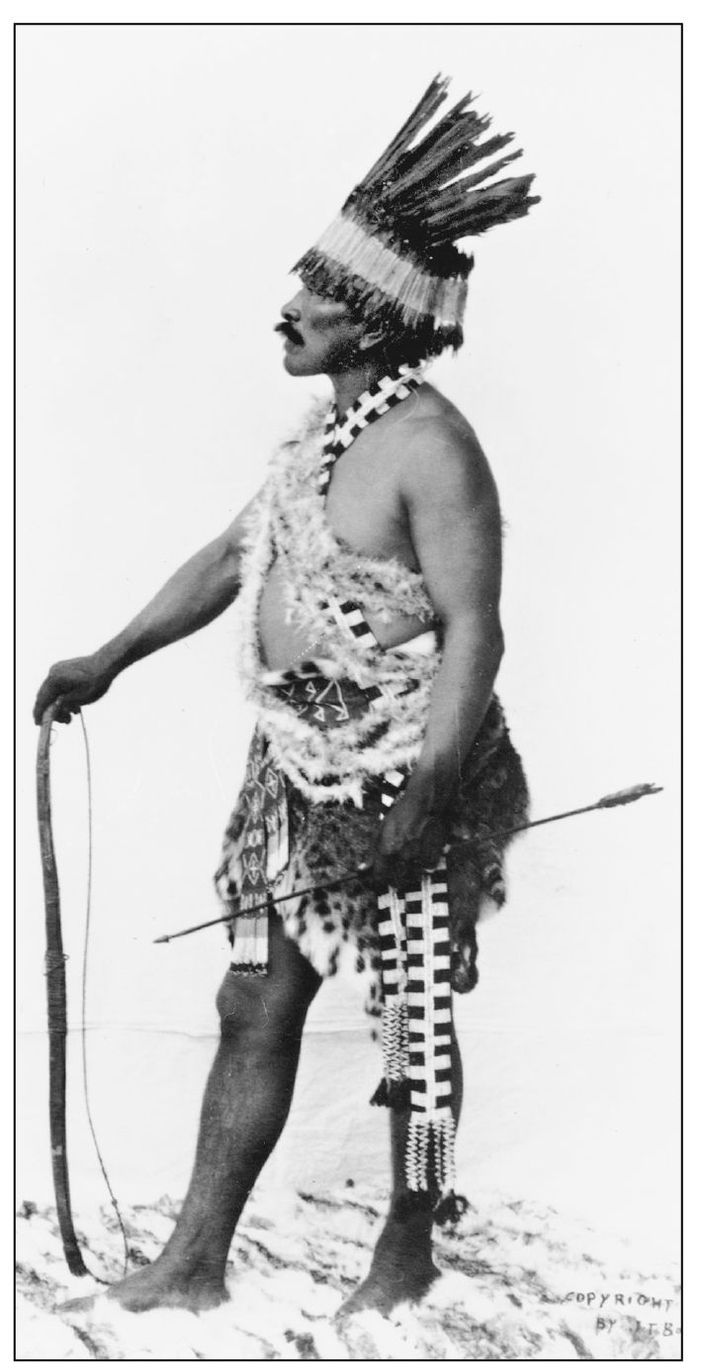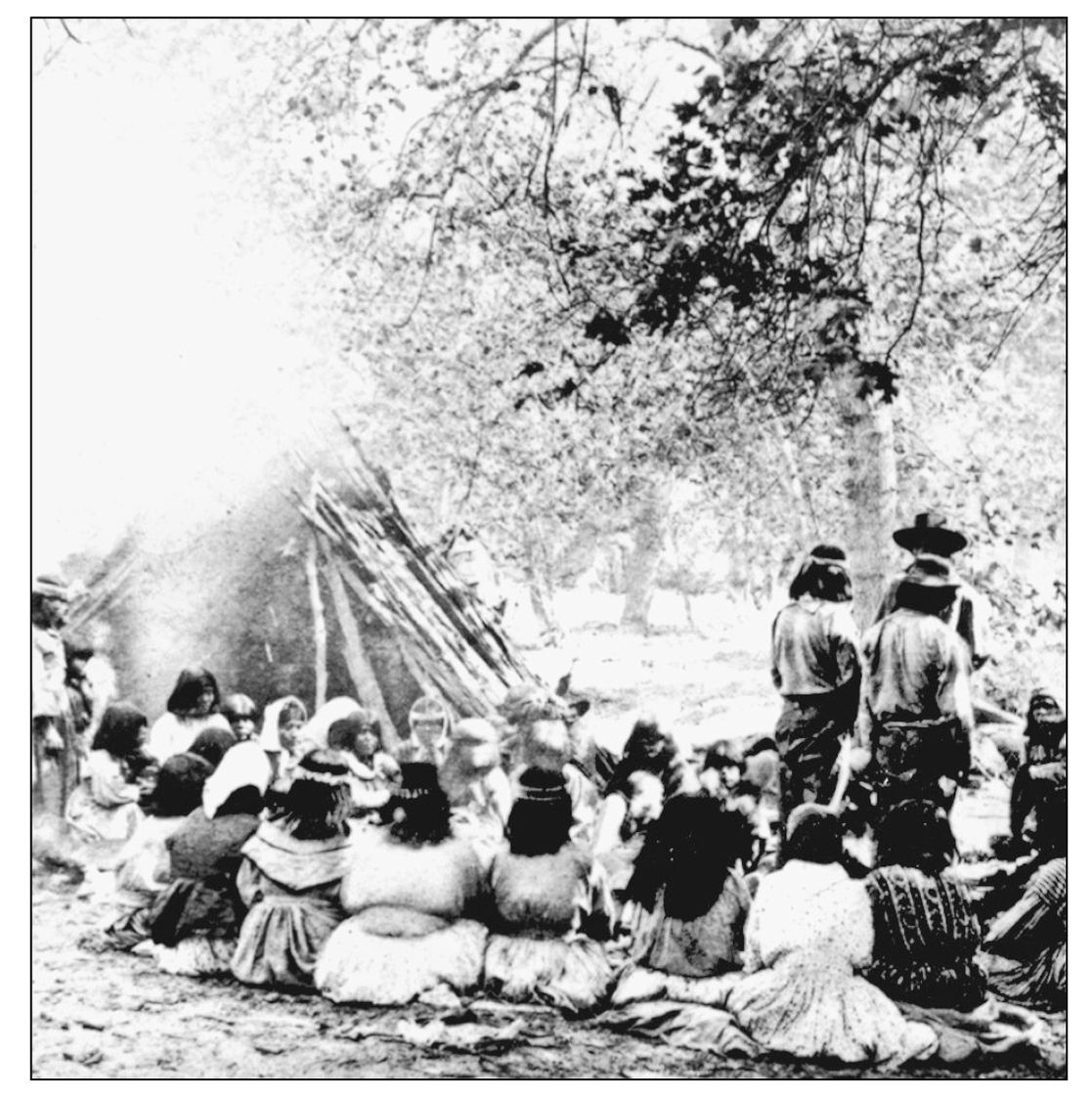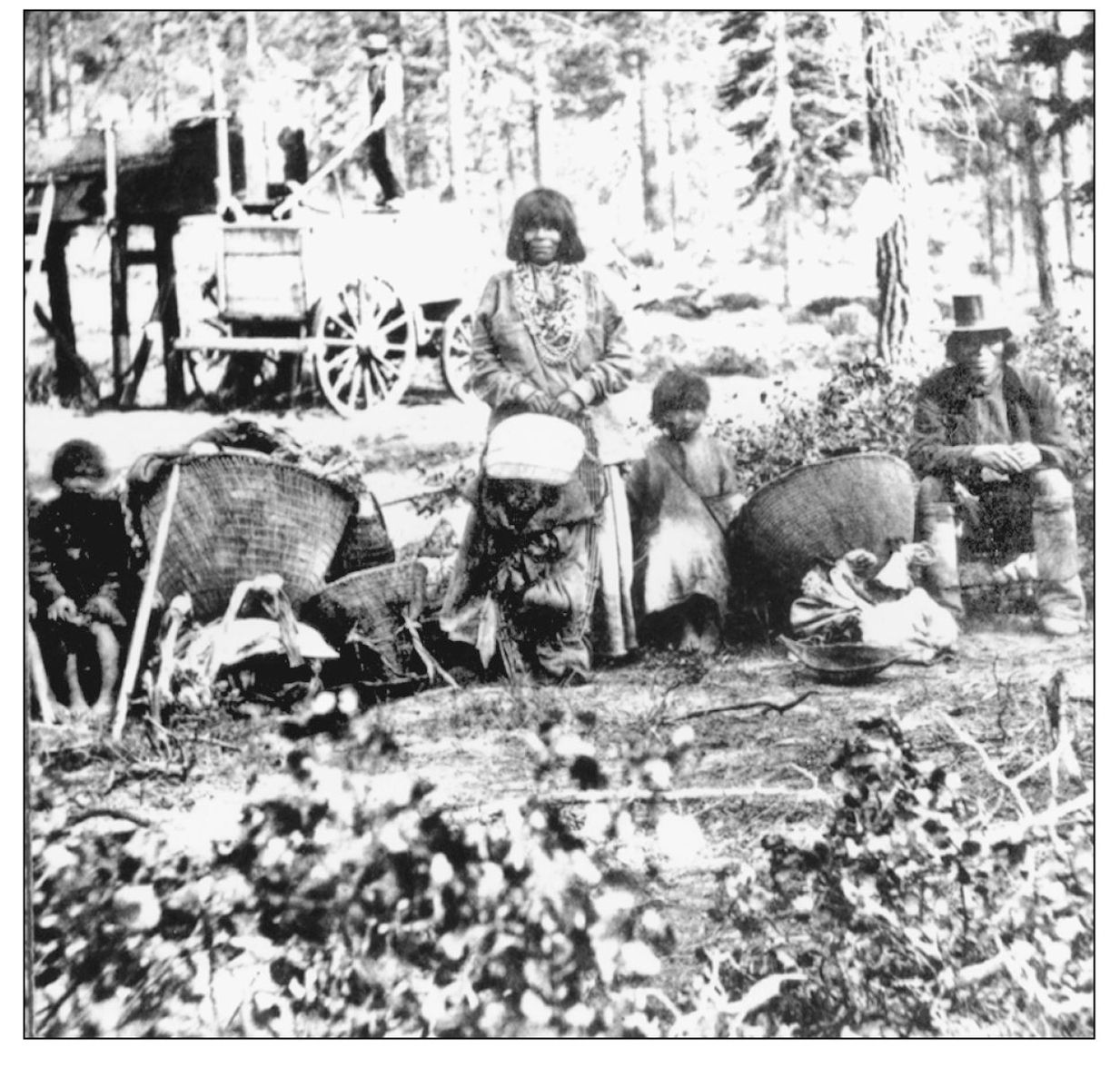ACKNOWLEDGMENTS
I would first like to thank Keith Stewart Walklet, photographer, writer, friend, and author of a history of the Ahwahnee Hotel, The Ahwahnee, Yosemites Grand Hotel . While directing the interpretative programs and public relations for the Yosemite Park and Curry Company, and then Yosemite Concession Services, Mr. Walklet made it possible for me to begin the project of printing and displaying many of the photographs in this book in the various venues in Yosemite National Park. As a result of his introduction, I became associated with Dave Forgang, Linda Eade, Barbara Baroza, Martha Lee, and Craig Bates of the Yosemite Museum. It was in this capacity that I was able to learn of the many images of Yosemites human history and the wonderful photographers that visited and worked there.
I would also to acknowledge the wonderful working relationship that I have had with Becky Chambers of Chambers Lorenz Design in Fresno, California, who directed the framing and display of many of the images that I prepared. The love of history and photography demonstrated by all of these people has made it possible for me to accomplish both the displays and this book. I would also like to thank the many managers and executives of the concession companies in Yosemite National Park, who, over the years, have trusted me to fulfill their wishes for an exposition of Yosemites fascinating history. With out the support of the concessionaires, none of this would have been possible. I would also like to recognize Shirley Sargent and Hank Johnson of Flying Spur Press, whose intense examination of Yosemite history has helped to educate me on the subject.
There are many other authors and works that have become the backbone of my Yosemite library, and at the end of this book, I have provided what I consider to be the definitive bibliography of Yosemite literature for those who wish to learn more. Since this book is basically a photographic history, the historical information that I provide is limited to the images themselves and brief captions. For an expanded understanding of Yosemite from the days of its first habitation by American interests in the 1850s, it will be up to you to dig deeper into the works of the many authors and photographers who have recorded Yosemites unique story.
FURTHER READING
Most of the photographs in this book are kept in the Yosemite Research Library, Yosemite Museum. Some remain in the authors collection. Many became available when, at the end of the Yosemite Park and Curry Company operations, their archives were donated to the National Park Service. Copies of the same photographs are also held privately and in other museums as many were the work of commercial photographers. However, as a body of work, this gift to the National Park Service was significant. Many others who have collected Yosemite photography chose at some time in their lives to make that work available to the public in a controlled way and to be stored and preserved. The library and museum at Yosemite is a significant repository for historic photography and artifacts and deserves much support. While further volumes of historic photography are forthcoming, there are also many excellent books containing photographs and historical information that have been valuable in the compilation of this volume.
Bunnell, Lafayette Houghton, M.D. Discovery of the Yosemite . Yosemite National Park, CA: Yosemite Association, 1990.
Chamberlain, Newell D. The Call of Gold . Lafayette, CA: Great West Books, 2002.
Hutchings, James Mason. In the Heart of the Sierras . Lafayette, CA: Great West Books, 1990.
Johnston, Hank. Railroads of the Yosemite Valley . 1995. Distributed by Yosemite Association.
Law, James. Memories of El Portal . Mariposa, CA: Mariposa Heritage Press, 1993.
Orland, Ted. Man and Yosemite . Santa Cruz, CA: The Image Continuum Press, 1985.
Russell, Carl Parcher. One Hundred Years in Yosemite . Yosemite National Park, CA: Yosemite Association, 1992.
Sargent, Shirley. Protecting Paradise . Yosemite, CA: Ponderosa Press, 1998.
Sargent, Shirley. Yosemite and Its Innkeepers . Yosemite, CA: Flying Spur Press, 2000.
Find more books like this at
www.imagesofamerica.com
Search for your hometown history, your old
stomping grounds, and even your favorite sports team.
One
THE NATIVE PEOPLES
This interesting image of an Indian chief wearing skins is one of the few photographs depicting native dress. Indians adopted Western clothing quite early. (Photo by Thomas Houseworth, courtesy Yosemite Museum.)
Francisco Georgely, a Yosemite Indian, was photographed in this pose by Jules Boysen around l900. This was one of the earliest attempts to illustrate native dress and tools. (Courtesy Yosemite Museum.)
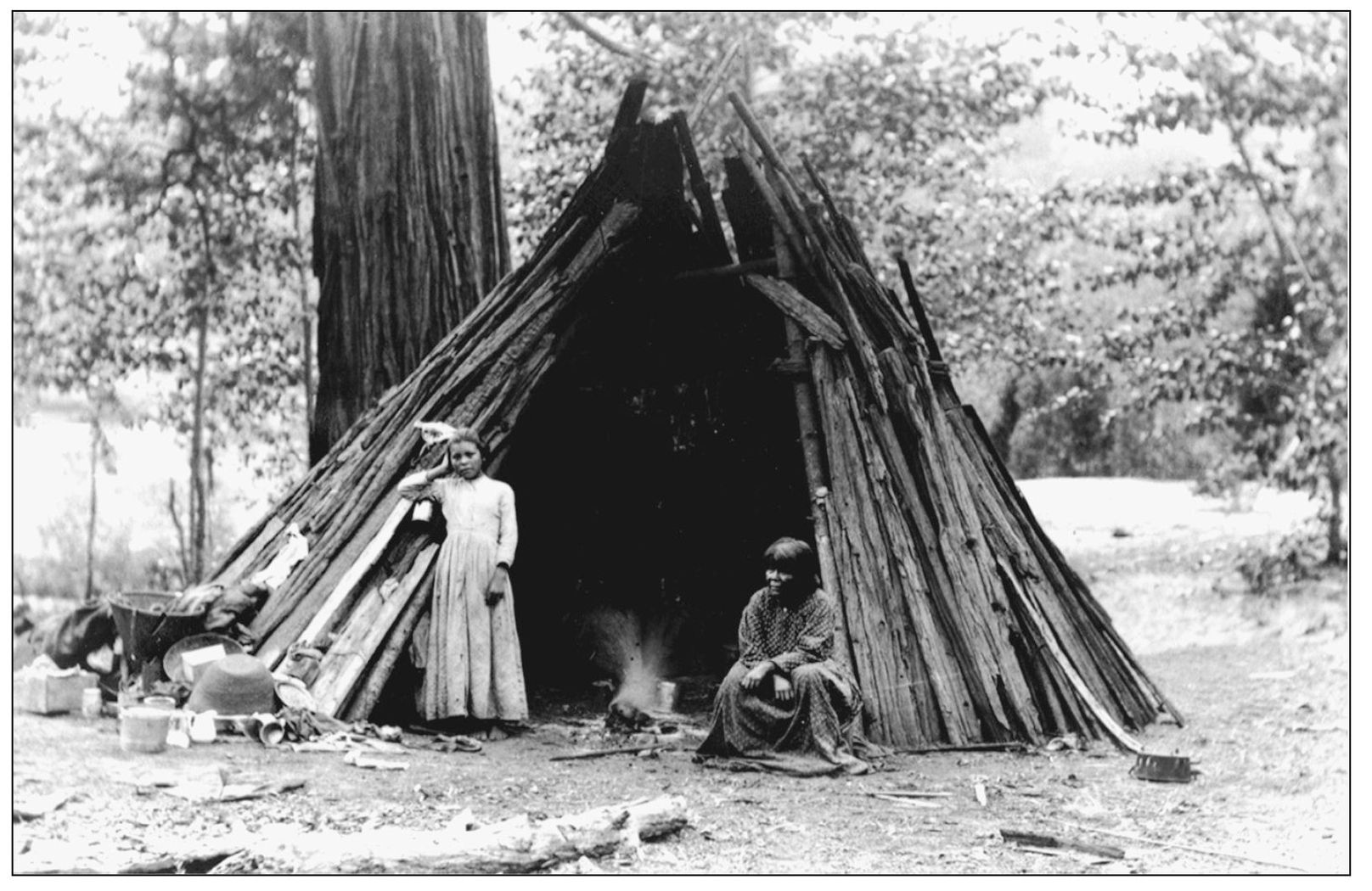
Pictured here is an Indian village in Yosemite Valley. The cedar bark house was made from common construction materials easily obtained in the valley. An opening at the top allowed for ventilation and smoke discharge, while the entrance could be closed to the weather as necessary. While bark was not difficult to obtain, the Yosemite Indians had no metal tools with which to work it until their contact with Americans. The Yosemites were hunters and gathers who moved to the lower country down the Merced River in the winter. Their staple foods were acorn meal, grains, game, fish, birds, and insects. They ground much of their food with mortar and pestle and cooked it in tightly woven baskets. Women did most of the work around the camp while men hunted and fished. Families were usually small, and women had some difficulty in conceiving. They had no pottery save for pine needle baskets covered with pine pitch, and they did not acquire horses or mules until the arrival of the miners. The Yosemites domesticated dogs and used them as beasts of burden and occasionally as food. (Photo by I.W. Tabor, courtesy Yosemite Museum.)
The title of this 1872 Eadweard Muybridge stereoview view is A Morning Council on the Merced. Arriving after photographer Carlton E. Watkins, Muybridge, an Englishman who took a realistic approach to photographic composition, visited Yosemite to photograph it for his friend artist Albert Bierstadt. Suggestions of Muybridges work in Bierstadts paintings are difficult to identify since the painter had a habit of moving around objectsincluding rocks and waterfallsin his work to improve on natures composition. (Courtesy Yosemite Museum.)





